Doesn’t it feel good when you’re the best at something? As for Amazon sellers, getting the much-coveted Best Seller badge is probably what everyone is aiming for.
This badge isn’t just for bragging rights or a sense of accomplishment.
Having the best seller badge could increase the chances of your product getting more customer attention.
In fact, e-commerce analytics firm Profitero has mentioned that this badge increases a product’s glance views by around 45%.
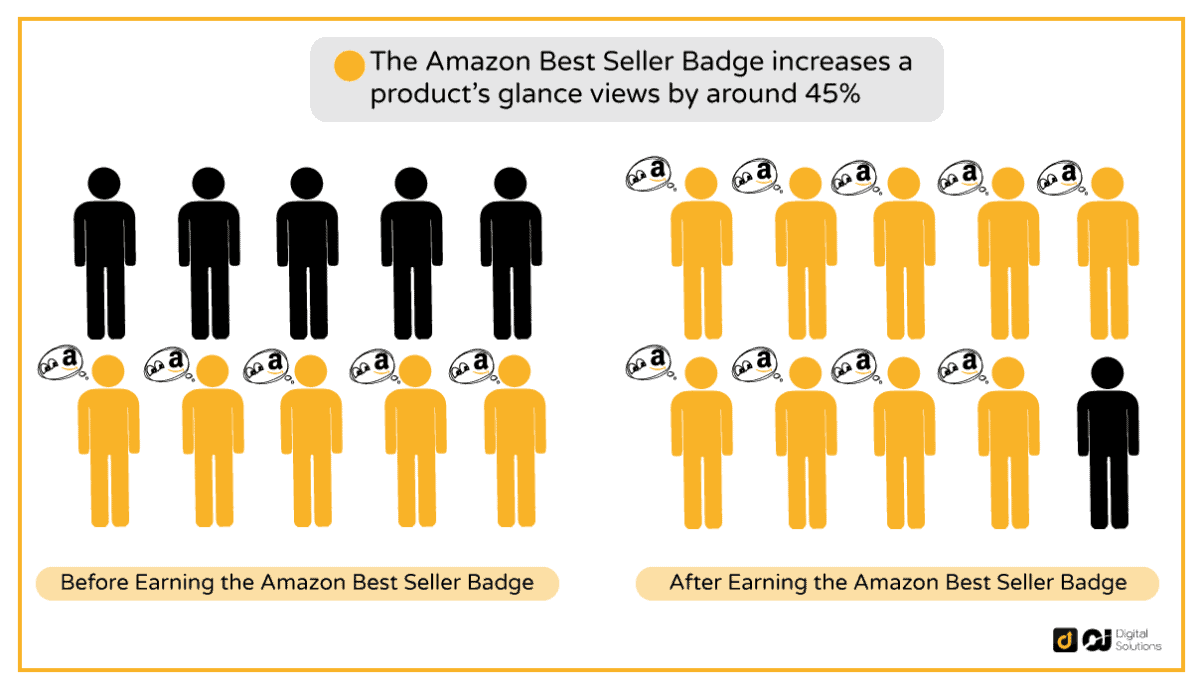
I’m sure you’d want that for your business, right? And regardless of how big or small your Amazon business is, you can achieve that too!
Among the many ways to get this badge include optimizing your product listings, knowing which product category you should target, and striking the right pricing for your merchandise.
After many years of helping Amazon sellers grow their business, I learned these methods and techniques, which I will share with you.
As you read this article, you will learn how to become a top seller on Amazon, so you can get the chance to earn the platform’s prestigious badge.
Moreover, I’ll tell you the exact metrics you should focus on, so you know what aspect you can adjust and improve on.
Let’s get started and learn how to get Amazon best seller badge!
What Is Amazon Best Seller Badge?
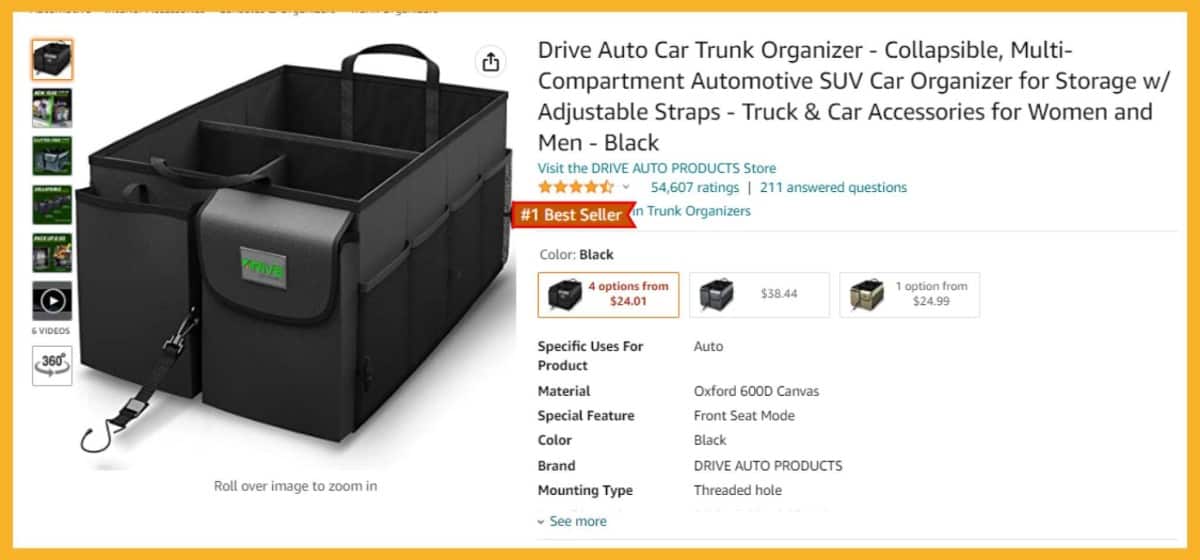
In learning how to become an Amazon bestseller, it is important to get to know the Amazon best seller badge first.
This badge is mostly about sales velocity. Amazon defines sales velocity as the number and dollar amount of a seller’s transactions during any given month.
In other words, the more a seller earns money from his products in a month, the higher the sales velocity and the better chances of achieving best-seller status.
It is important to note that Amazon considers recent sales history in awarding the badge.
The best seller badge is the orange ribbon icon located just below the star ratings near the top of a product page or listing, as shown in the picture above.
You can also find this striking orange element on Amazon’s search results page (SERP), as you can see in the photo below.
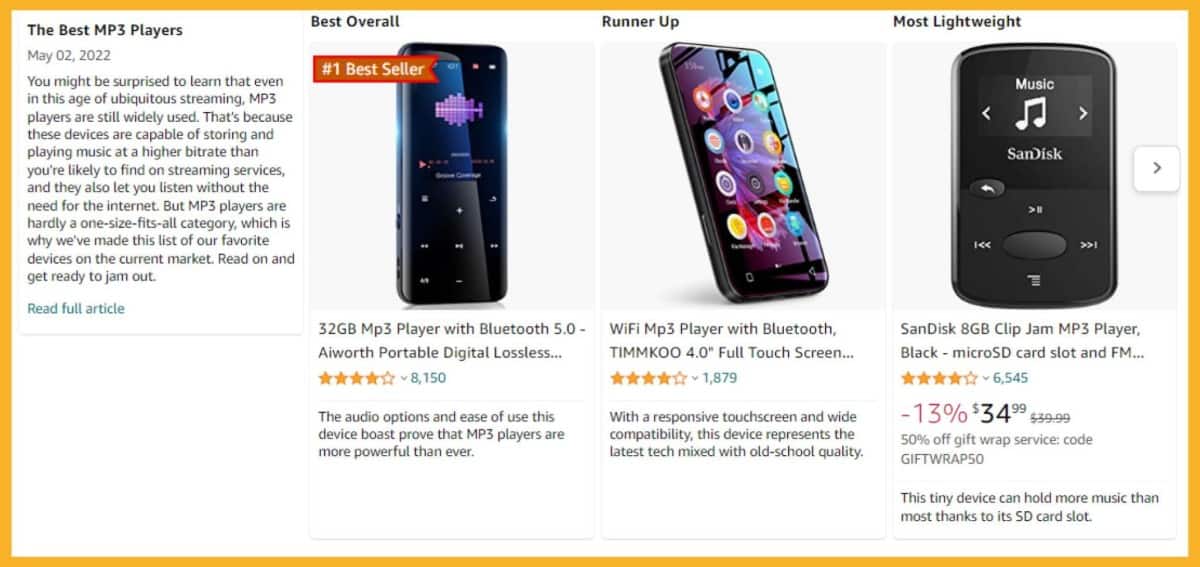
Don’t confuse the orange icon of the Best Seller badge with the “New Release” badge, which has the same color.
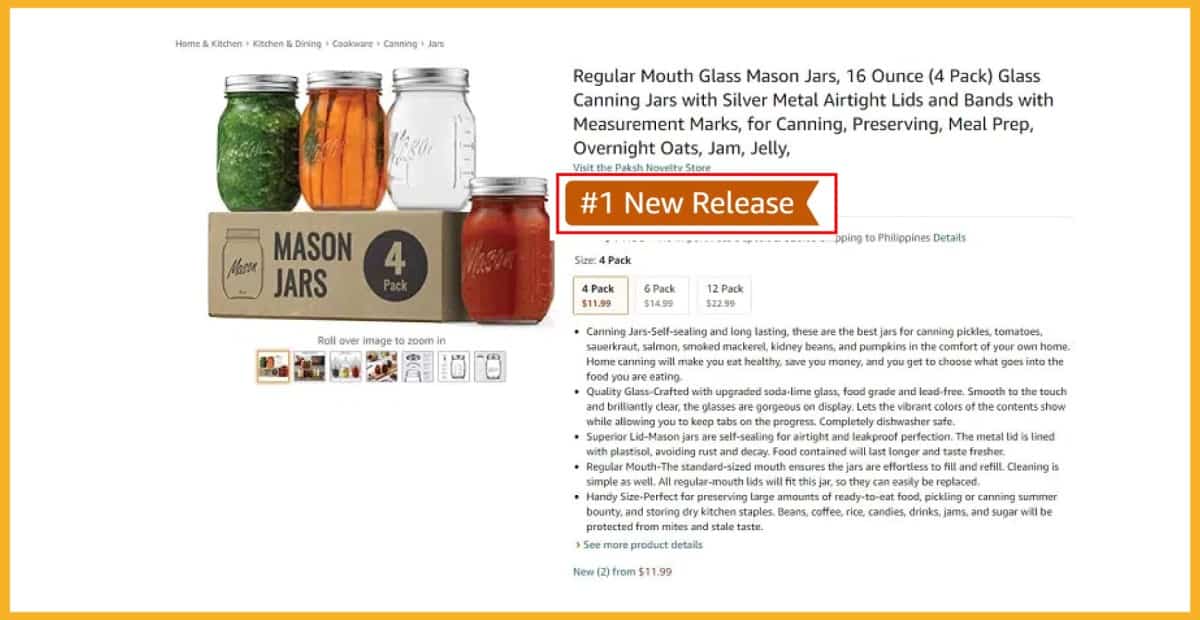
Originally, Amazon awarded the badge to only one bestseller per category. Now, the 100 best-selling products in a certain category can proudly carry the badge.
For a better understanding of the top 100 concept, let’s take for example, the Electronics category. This category includes products like batteries, earphones, and printers.
So back in the day, only a particular battery or printer could earn this badge at a time. Now, several batteries and printers could all get badges simultaneously for a certain period.

The badge for bestsellers is awarded and updated by the hour.
This means that, for example, if one of your products got this badge at 10:00 AM today, there is no 100% guarantee that the same product will hold that badge beyond 11:00 AM of the same day.
Also, on average, the broader a category where your product is classified, the harder it is to get the badge.
The more specific the sub-category, the easier it is to earn the badge.
You will learn how this category-badge dynamic works later on in the article.
Why Aim for Best Seller Status?
Having best selling products on Amazon brings the following perks:
- Customers are more likely to buy products that have this badge since it’s a sign that these items more or less have high quality due to sheer sales volume.
- Products with this badge may show up in search results even if a customer looks for products using an unrelated search term within your category.
How To Get Amazon Best Seller Badge: The Metrics
How can your products become best selling to the point of earning the badge? Take a look at the following elements of your Amazon business and tweak them to your advantage:
Listing Optimization
As you may already know, a product listing contains information, features, etc., about a particular item you’re selling on Amazon.
Optimizing a listing only means one thing: making your listing rank as high on the Amazon search results page (SERP) as possible.
A high SERP ranking tends to boost sales. After all, the more easily your customers see your products after typing their search keywords, the more likely they’ll buy your product.
There are many ways to make your listing a frontrunner on Amazon’s SERP. These methods include:
- Using keywords in your listing which customers are most likely to use when searching for your product (keyword research)
- Placing high-quality images in your listing (hiring a professional photographer or graphic designer might help optimize your images)
- Adding A+ content to your listing
For a more in-depth discussion on keyword research, image optimization, and other related topics mentioned above, check out our guide on Amazon listing optimization.
Target The Right Category
Wrong Categories Lead to Less Chances of Gaining Best Seller Status
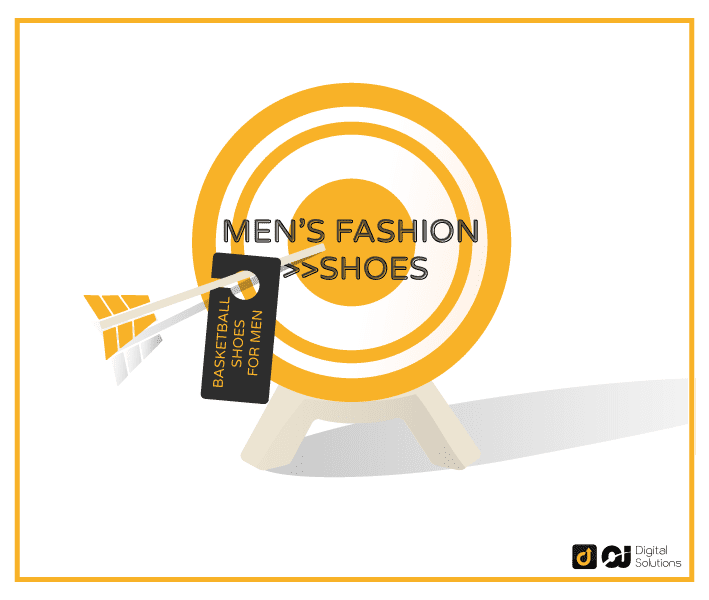
Imagine going to a large supermarket where laundry products are placed under the label “Fresh Produce,” and fruits are placed in shelves labeled “Home Improvement.”
Would you have an easy time locating what you need here?
Your potential customers will also have the same difficulty locating your product if you place it in the wrong category.
The harder it is for buyers to find your products, the less sales you’ll make and the farther your chance of earning a Best Seller badge.
One of the most effective ways to correctly categorize your products to help boost sales is by using Amazon’s browse tree guide.
This will make sure that your products are connected to all the relevant categories, making it easier for you to earn both badge and buyers.
Go for the Stream, Not the Ocean
Think of Amazon categories as oceans, and subcategories as rivers and streams that ultimately feed into the oceans. Then, imagine Amazon sellers as sea creatures. If you were a seller, where do you think you would have a harder time surviving?
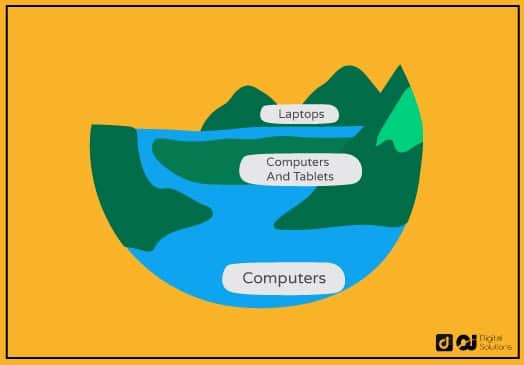
This same analogy applies to the Best Seller Badge.
If, for example, you’re selling pre-owned laptops. It’s not enough that you place your laptops under the broad category “Computers.”
To help boost sales and increase your chances of becoming a bestseller, you must classify your items in the narrow subcategory “Laptops.”
Check out the text below to see how this “river” of “Laptops” subcategory feeds into the ocean of “Computers.”
Computers >> Computers & Tablets >> Laptops
As you can see, the broad category of “Computers” narrows down to the subcategory “Laptops.” This is how Amazon, as of the writing of this article, classifies laptops.
For a less techie example, imagine you’re selling a kitchen cleaning scrub.
To attract more sales and get the badge, it’s best to classify the product under the subcategory “Household Cleaners” instead of the broader category of “Cleaning Supplies.”
The text below shows, from left to right, the broadest category to the narrowest subcategory.
Home & Kitchen >> Cleaning Supplies >> Household Cleaners
Avoid Selling Products in a Competitive Category
Not all product categories give a good chance of becoming a bestseller. The more competitive a product category is, the lesser the chances of garnering the Amazon Best Seller logo.
A competitive category basically means a product category with relatively more sellers to compete with.
If you’re a small seller or one who is just beginning to learn the ropes selling on Amazon, you’re like a small fish in a pond with a lot of big fish when you sell in a competitive category.
An example of a competitive category is “Clothing.” Other examples include “Electronics” and “Toys and Games.”
If you’re just starting out as a seller and you want to earn your badge quickly, you might want to avoid selling in these categories.
I don’t want to totally discourage you from selling in such categories, though.
You can still sell and thrive in competitive categories, especially once you have learned advanced seller skills like converting product page visits into sales.
Learn more about this by reading our article on Amazon conversion rates and how to improve them.
On the other hand, targeting the less competitive categories like video games and musical instruments might make earning the badge relatively easier.
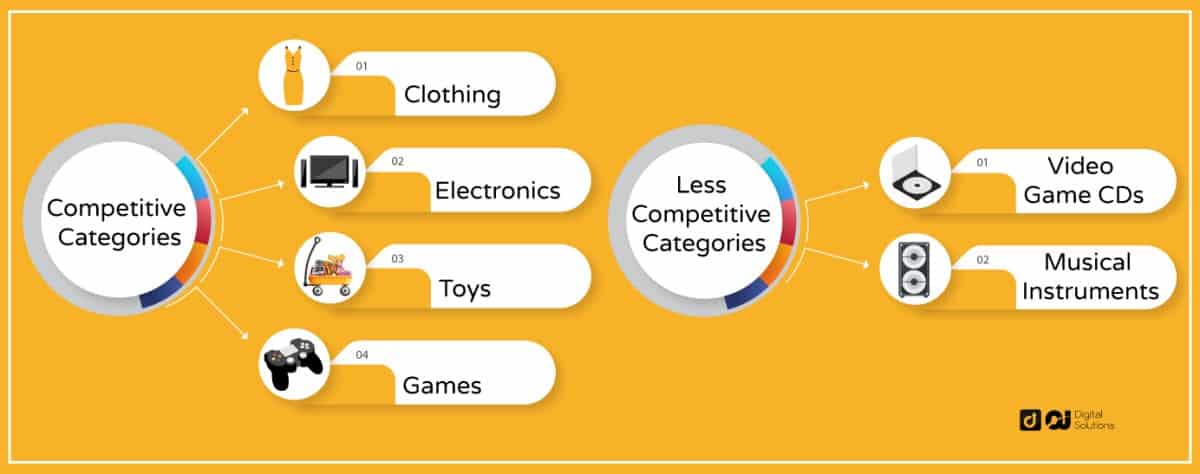
As you can see, correctly categorizing your products and targeting less competitive categories could mean the difference between becoming a bestseller and being an ordinary merchant. But there are other things to consider aside from these.
Maintain Proper Pricing
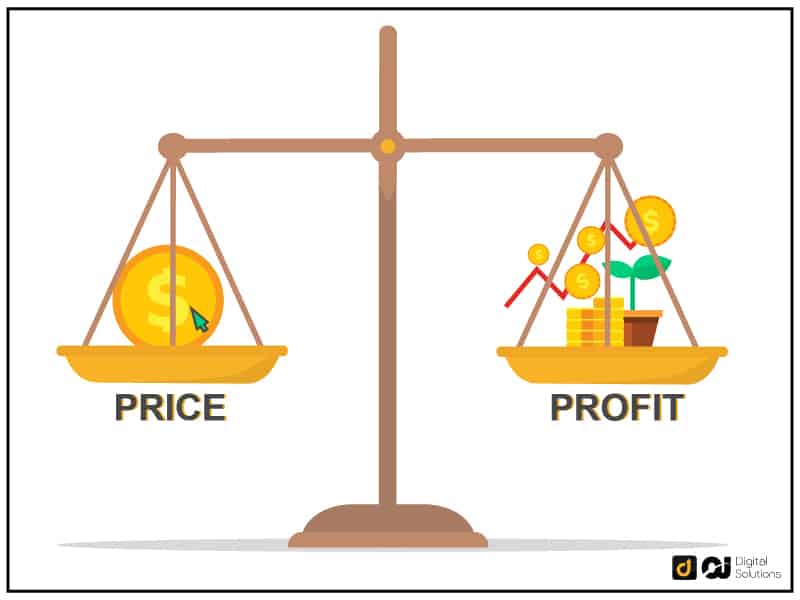
When can an Amazon seller who is aiming for best seller status say, “the price is right.”?
A key Amazon best seller strategy is determining the right balance between making prices affordable and ensuring you still earn some profit (without sacrificing product quality).
According to ecommerce solutions provider DataFeedWatch, among the many ways to help you strike this balance include using repricing tools and adding discounts.
If your product tends to be a bit more expensive than your competitors’ merchandise, emphasize the value your product offers and how it is better than the products of your competitors.
Advertising Strategies
In a large school of fish, how can you appreciate the beauty and uniqueness of a single fish?
This question is as valid for fish as for sellers in competitive product categories.
The answer? Amazon pay-per-click (PPC) advertising campaigns.
PPC advertising on Amazon both helps increase sales and enables more potential customers to discover you amid an ocean of competitors.
These PPC advertisements are also cost-effective even in non-competitive categories, since you don’t pay a fixed fee like in regular advertising methods.
Top-Notch Copywriting
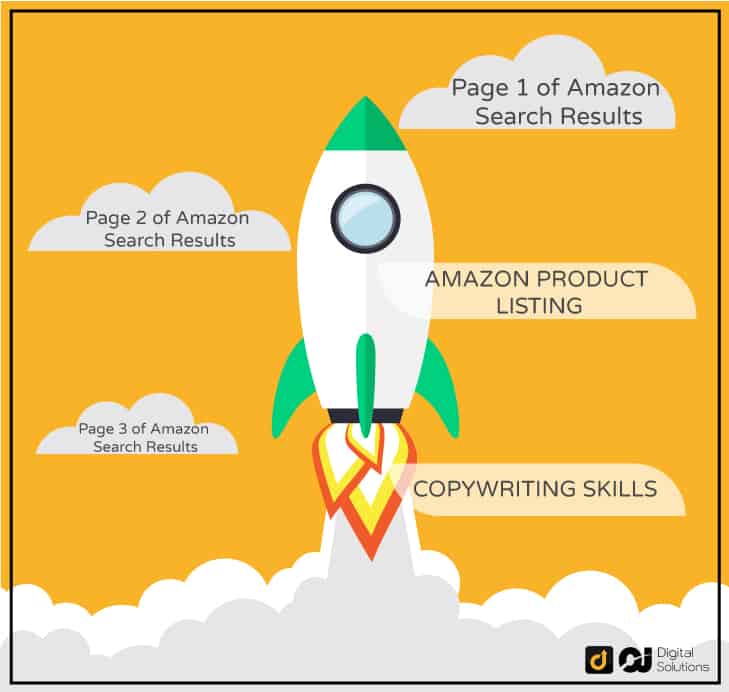
Who says writing is only for literature majors or bloggers? Contrary to what many might think, writing skills are also very important on Amazon.
In fact, writing a good Amazon detail page or product page could mean the difference between a higher ranking or lower spot on the platform’s search results page (SERP).
Amazon’s A9 algorithm (the platform’s automatic ranking system) tends to put optimized or well-written Amazon detail pages near the top of a SERP.
More buyers tend to see highly-ranked product detail pages, significantly increasing the chances of higher sales rankings.
The higher up you go in the sales ranking ladder, the greater the possibility of earning Amazon’s Best Seller Badge.
If you’re not so confident with your writing skills, you may want to consider hiring an Amazon copywriter.
That way, you get the help of a professional writer to help grow your business.
Now that you’ve learned all about the Amazon Best Seller badge and some tips to help get it, it’s time for some answers to some commonly-asked questions regarding the badge.
FAQ – Frequently Asked Questions
How Often Is The Best Seller Ranking Updated On Amazon?
Amazon updates the sales rank of sellers every hour, taking into account their total sales history. This history could go as far back as one month.
How is Amazon’s Choice Different from the Best Seller Badge?
Though both Amazon’s Choice and the Best Seller Badge can be found in the same area of a product page or SERP, they have different colors.
The Best Seller Badge has an orange color while Amazon’s Choice is colored dark blue.
The Amazon’s Choice badge, unlike its best seller counterpart which focuses mainly on sales, is for products that best match a keyword used by a customer searching on Amazon.
In this aspect, Amazon’s Choice is generally more dependent on quality copywriting of product pages than the Best Seller badge.
Meanwhile, customer ratings, which do not have a bearing on attaining bestseller status, affect the earning of the Amazon’s Choice badge.
If I get a Best Seller badge for a Certain Product Sold in One Country, Would I Automatically Get the Badge for the Same Product in Another Country?
No. There is no guarantee that you will get the Best Seller badge for the same product you’re selling in different countries.
For example, if you’re selling a blender which became an Amazon bestseller in the U.S. Marketplace, there would be no guarantee you’d get that badge for that blender if you also sold it in the Indian Marketplace.
When it comes to selling in different marketplaces, sales rankings for a particular marketplace and other factors discussed earlier in the article are still the main bases for awarding the Amazon bestseller status.
Do Amazon Rules for Determining Best Seller Badges Apply The Same to Print and Kindle Direct Publishing Books?
No, not exactly. Based on our experience, Amazon ranks books not only on sales volume but also based on how quickly sellers turn book listings into hard cash.
For example, if you sold 25 books per hour, your books would rank higher on Amazon’s SERP than if you sold 80 copies in a week.
Everything being equal, increasing Kindle book sales will increase your chances of getting a badge compared to selling a print book.
What to Do Next?
Now that you’ve learned how to get an Amazon best seller badge and where you can get access to all the tools you need, it’s time to put these ideas into action.
Why don’t you try out some of the tips I shared here and see for yourself how you can grow your business through the badge.
Has this article been helpful? What other aspects of Amazon business operations do you want me to tackle in the future?
Please feel free to leave your questions, ideas, and suggestions in the comments section below.






